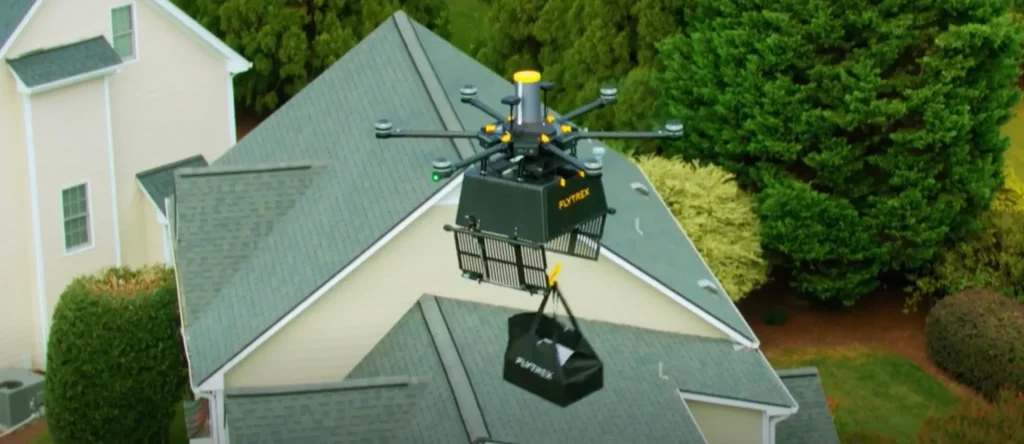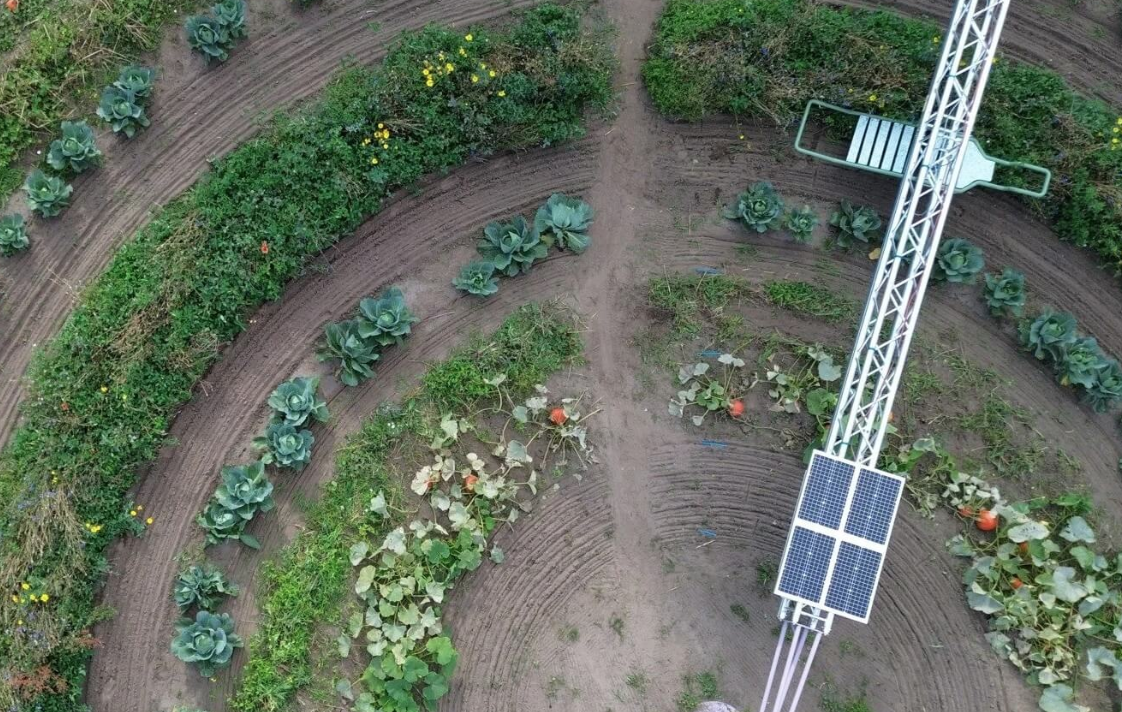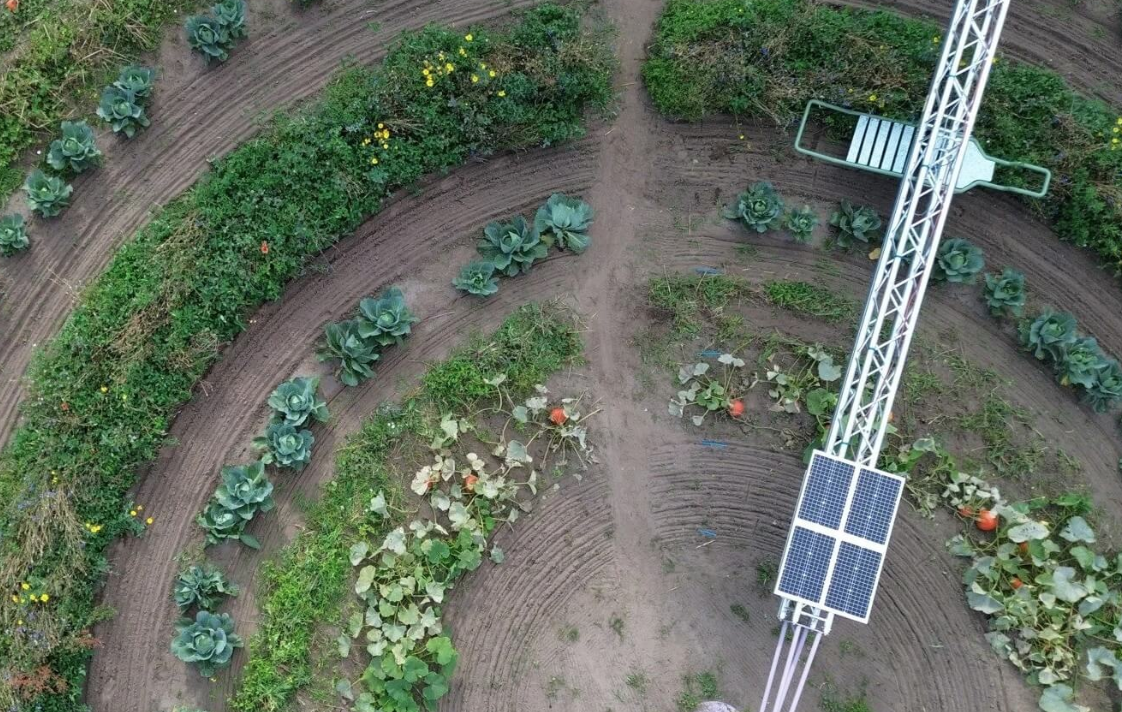Plenty of European and American architects are piling on to say that Neom, in Saudi Arabia is a sustainable idea. They make a fortune doing it. Al Gore warned in An Inconvenient Truth: “We are witnessing a collision between our civilization and the Earth.” That collision is fueled not just by carbon but by entrenched […]
The post Are you tangled up in climate conflict, because your job depends on it? New study appeared first on Green Prophet.
Flytrex picks up and delivers UberEats
Your burrito’s got wings — and a smaller carbon footprint
It was more than a decade ago when we reported on Amazon drone deliveries. It felt like the sky would be full of drones dropping packages and chocolate milkshakes form the sky. But it’s taken a while to rejig and the startup world might get it right this time. Picture this: you’re sitting on your porch, craving sushi. Instead of waiting for a car to weave through traffic –– inviting someone you don’t know into your private space a small drone hums overhead and gently lowers your order right into your backyard.
No idling engines, no delivery driver getting stuck at red lights — just your meal, fast and clean.
Amazon’s first drone, Prime Air
That’s the promise behind Uber Eats’ new partnership with Flytrex, a drone company that has already flown more than 200,000 orders to hungry customers. Together, they’ll start testing drone deliveries in select US neighborhoods later this year.
Why it’s a greener delivery than a car
The “last mile” of delivery — when your food leaves the restaurant and comes to your door — is one of the most polluting parts of the process. A car, scooter, or van often burns fuel just to deliver one single order.
Flytrex’s electric drones change that math:
-
No tailpipes: Drones are battery-powered, producing zero emissions while flying.
-
Straight lines, not traffic jams: They fly directly from a local hub as the crow flies, to your home, saving time and carbon.
-
Better with clean power: As more cities run on renewables, the footprint of charging those drones shrinks even further.
Why Flytrex Works When Others Struggle
The idea of drone delivery isn’t new. Amazon, Walmart, and others have tried, but most programs get bogged down by red tape, safety risks, or technology that just isn’t ready. Remember Elon Musk talking about SpaceX and regulatory hurdles he faced?
Flytrex has managed to stay ahead of the curve because of a few key advantages: Flytrex is one of the few companies with Federal Aviation Administration (FAA) approval for Beyond Visual Line of Sight (BVLOS) flights. That means a drone doesn’t need someone chasing after it with binoculars — instead, operators can oversee a fleet from a central hub. This is essential if drone delivery is ever going to scale beyond novelty.
Instead of flying across an entire city, Flytrex works in smaller “delivery zones.” Think suburban neighborhoods or communities with a local hub nearby. Drones take off from that hub, fly directly to your yard, and lower food with a tether. Shorter trips = more efficiency, fewer crashes, and lower emissions.
Flytrex drones don’t land in your driveway. They hover about 80 feet up, then lower your order on a secure wire. No blades near people, pets, or kids — and no need for a landing pad. The drone never actually touches down.
With more than 200,000 successful deliveries already completed, Flytrex has shown the system actually works in everyday life, not just in test labs. Customers order through a regular app, track the drone on a map, and then walk outside when it arrives. Just don’t get caught on the rope!
Green Prophet advocates for creating a more sustainable planet. We prefer that people return to cooking the good old fashioned way, and creating communities and “home” around people with similar values (jump into our recipes, developed by our in-house grandmother). But we also don’t suggest that everyone should do what we say! We believe a sustainable planet should include indulgences and they be fueled by clean, green energy.
We’re not talking about a sci-fi fantasy anymore. Drone delivery is here, and Uber’s return to the skies suggests it may soon be mainstream. Imagine a world where poke bowls, burritos, and even that late-night bubble tea come buzzing down from above, all with a lighter carbon footprint.
More on Flytrex business and investment
Flytrex, is a drone-delivery startup founded in 2013, established by Yariv Bash and Amit Regev. Bash, who also co-founded SpaceIL, serves as CEO, while Regev is the company’s Chief Product Officer. Together they set out to solve last-mile delivery challenges by building both drones and the control software that enables backyard-to-backyard service in suburban areas. Their vision has led Flytrex to become one of the most visible players in drone logistics, with pilot projects launched in Iceland and later in the United States, including North Carolina and Texas.
Early rounds between 2017 and 2019 brought in a mix of venture capital and angel investors such as Armada Investment AG, Daniel Gutenberg, Joey Low, b2venture, and TechAviv Founder Partners, raising a few million dollars to fund research and initial pilots. Momentum accelerated in 2021, when Flytrex announced a $40 million Series C round led by BRM Group, with participation from OurCrowd, Benhamou Global Ventures, BackBone Ventures, and prominent angel investor Lukasz Gadowski. By the end of that round, Flytrex’s cumulative funding had reached about $60 million, positioning it to expand US operations and navigate regulatory approvals.
::Flytrex
The post Sushi from the sky thanks to UberEats and Flytrex appeared first on Green Prophet.




